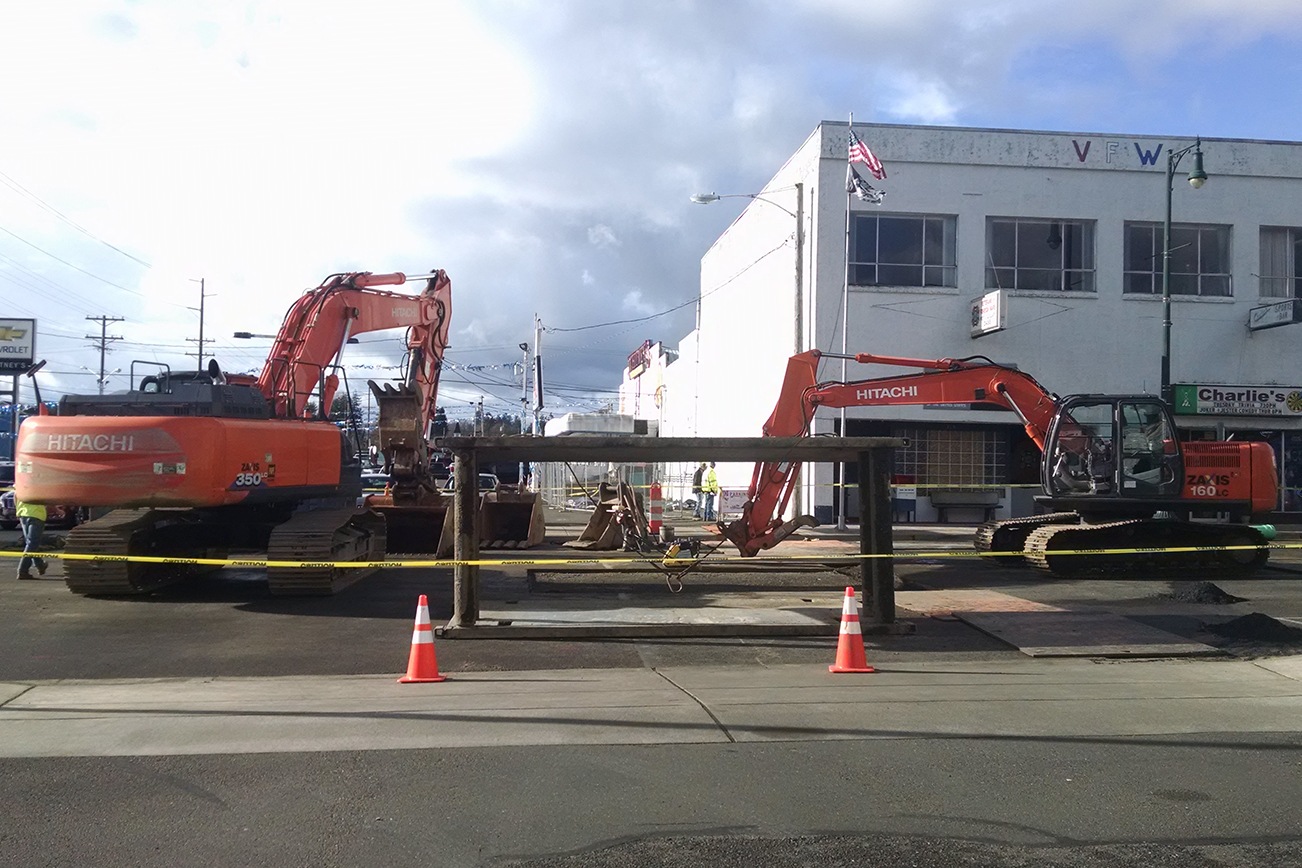With construction outside of Whitney’s Chevrolet in Montesano all but completed, Montesano residents soon will have their streets back to normal.
For the past several months, stretches of Main Street, Pioneer Avenue and First Avenue have been torn up or blocked off, leading to traffic and parking issues. However, the construction project that is now in its final stages was necessary to ensure the safety of Montesano residents now and in the future.
In 1995 the Department of Ecology asked that legacy gas tanks underneath Whitney’s be removed as they were contaminating the underlying soil.
As bad as soil contamination sounds, Sean P. Trimble, senior geologist at Environmental Partners, Inc., explained that it could lead to a more serious issue if not fixed.
“The biggest environmental concern is that groundwater will carry contamination from the soil to the Chehalis River,” Trimble said.
Trimble said the problem can be resolved by setting up soil vapor extraction wells, and through a process known as air sparging — air pumped into the ground that brings the contaminants to the surface of the soil, where they can then be extracted from the soil.
Whitney’s owner Stormy Glick noted that the dealership is covering the cost of the $1.2 million project as the old tanks are on their property, making them potentially liable for legal issues arising from contamination. However, the tanks were there long before Whitney’s set up shop.
Trimble and Glick both mentioned that it is difficult to know the origin of the tanks, as the owner of the property has changed throughout the past.
In 2000, the Environmental Protection Agency began to look into soil contamination under the property, Glick said. The project may be used as a point of reference for the Department of Ecology when dealing with similar issues throughout the country, he added.
“The Department of Ecology wants to see if they can clean up a small town before applying the same methods to a larger town,” Glick said.
The methods have worked so far in Montesano, but Trimble noted that the work is not quite complete, as monitoring contamination and its removal is an ongoing process.
“There is more work to be done in the short term and in the long term,” Trimble said.
While this quote may alarm citizens who are looking for things to get back to normal, they can rest assured knowing that the worst of the construction is in the past.
“The biggest short-term work involves restoring the streets and the parking that goes along with them,” Trimble said.
Cold weather in Montesano has kept the project from being completed, as it has delayed the repair of asphalt where soil vapor extraction wells were dug. Temporary asphalt covers the holes for the time being, but that will be patched with permanent asphalt as soon as possible, Trimble explained.
When the work is completed, Trimble says the citizens of Montesano will no longer have to worry about the soil underneath Whitney’s leading to further contamination issues.
“The release of contamination was from historic tanks, tanks which have all been removed,” Trimble said.
Once streets are restored the long-term work will consist of routine maintenance and monitoring the project’s progress, meaning that life as a commuter in Montesano will be back to normal.



